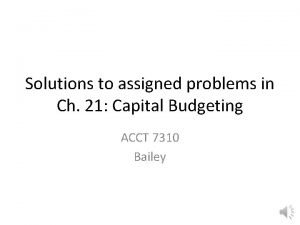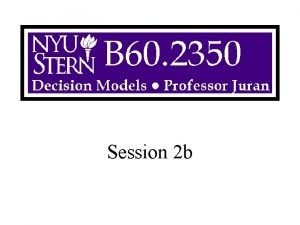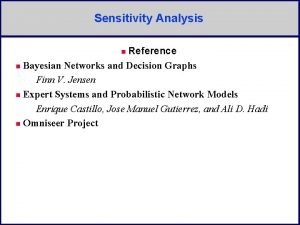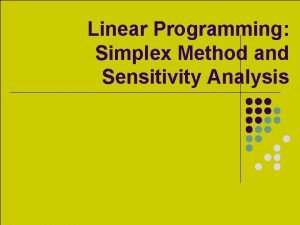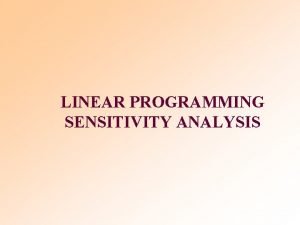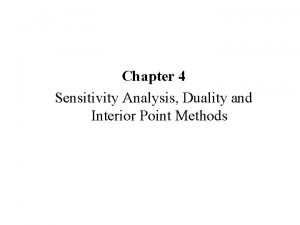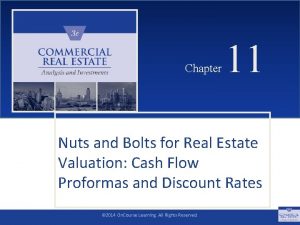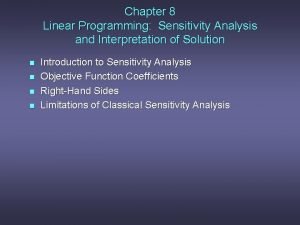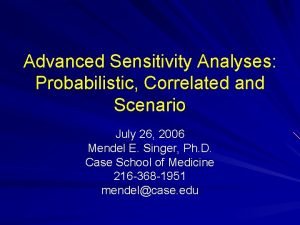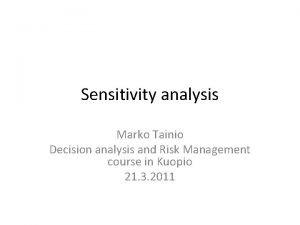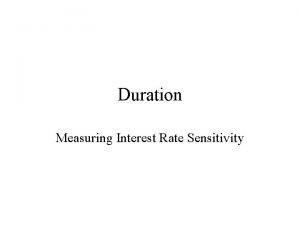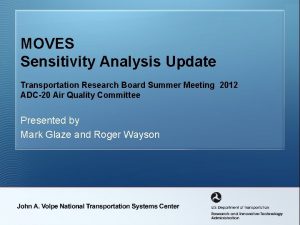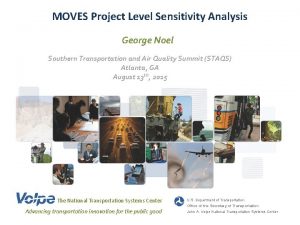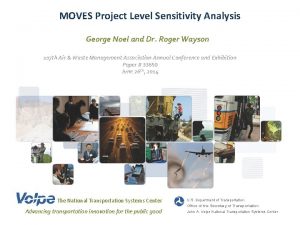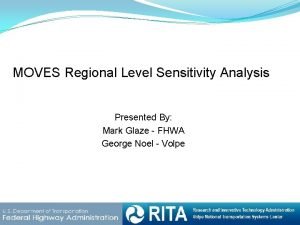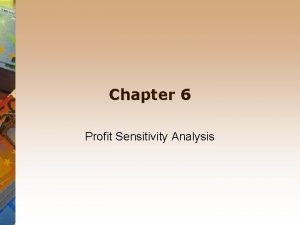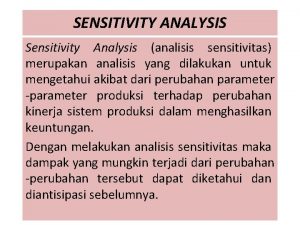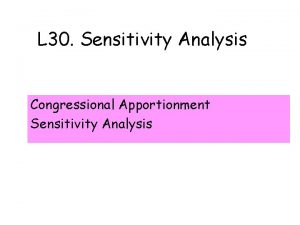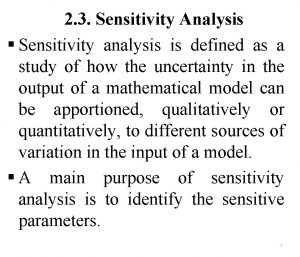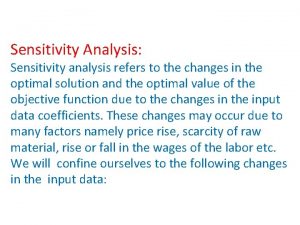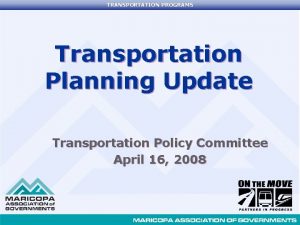MOVES Project Level Sensitivity Analysis Update Transportation Research












- Slides: 12

MOVES Project Level Sensitivity Analysis Update Transportation Research Board 93 rd Annual Meeting Transportation and Air Quality Committee, ADC 20 Presented By: George Noel – Volpe Mark Glaze - FHWA 1/13/2014

History of MOVES Sensitivity Analysis • MOVES Project Level Analysis Began in November 2012 ─ Is a complement analysis to the Regional Level Sensitivity Analysis – Report released in December 2012 • Focused on three variables associated with the Project Level Domain ─ Age Distribution ─ Fleet Mixture (Link Source Type) ─ MOVES Drive Schedules § Average Speed, Link Drive Schedule, and Operating Mode Distribution • Coordinate with NCHRP 25 -38 to avoid overlapping analyses • Volpe to complete draft report January 2014 and final report release March 2014 8/15/2016 2

Age Distribution Analysis • The Project Level applied more meaningful variations ─ Reached out to the Transportation Planning Board (TPB) of the Metropolitan Washington Council of Governments (MWCOG) ─ Provided Age Distribution data for each MOVES source type ─ For each source type analyzed, divided the Age Distribution into age groups based upon the trends observed from the TPB of MWCOG data. • Analyzed the effects of vehicle aging on Passenger Cars, Transit Buses, Single Unit Trucks and Combination Trucks 8/15/2016 3

Age Distribution Passenger Car Analysis and Results Passenger Car Vehicle Age Range Baseline Age Fraction Scenario 1 Scenario 2 Scenario 3 Scenario 4 Scenario 5 0 -3 years 4 -7 years 8 -12 years 13 -17 years 0. 32 0. 26 0. 14 -5% -2% 5% 4% -10% -5% 10% 8% -20% -7. 50% 20% 15% -30% -10% 30% 20% -45% -20% 50% 30% 18 -30 years Average Vehicle Age 0. 06 2. 50% 5% 7. 50% 10% 25% 7. 48 7. 68 7. 86 8. 21 8. 53 9. 24 Source Type Passenger Car 8/15/2016 Pollutant NOX Case Baseline Scenario 1 Scenario 2 Scenario 3 Scenario 4 Scenario 5 Average Age 7. 48 7. 68 7. 86 8. 21 8. 53 9. 24 Emission Rate (gram/vehicle- Percent Change mile) 0. 2929 0. 3017 0. 3104 0. 3246 0. 3367 0. 37 2. 91% 5. 63% 9. 76% 12. 99% 20. 84% 4

Fleet Mix (Link Source Type) • Conduct Fleet Mix Sensitivity Analysis for multiple cases ─ Geographic Area Data Source ─ Passenger Car to Passenger Truck Ratio ─ Heavy Duty Truck Mix ─ Heavy Duty Truck Type Mix ─ Transit Bus Mix • Utilized Fleet Mix data provided by Georgia Tech • Compared composite emissions rates to the ‘Baseline Case’ specific to the scenario/cases that were analyzed 8/15/2016 5

Fleet Mix Geographic Area Data Source Results 8/15/2016 6

Average Speed compared to Drive Schedule and Operating Mode Distribution • The Project Level Sensitivity Analysis compared using Average Speed for defining a link to: ─ Highway Capacity Manual (HCM) derived Drive Schedule/Operating Mode Distributions ─ Trip based Empirical Data provided by Georgia Tech ─ Link Types analyzed § Cruise Conditions o Arterial o Freeway § Intersection Links o Approach o Queue o Acceleration 8/15/2016 7

Example: MOVES Default Drive Schedules 8/15/2016 8

Average Speed • The user will specify an average speed for a link The average speed and distance assigned to the link determines the Source Operating Hours spent of the link. ─ The average speed should represent the conditions of the roadway segment being analyzed ─ The Average Speed approach utilizes embedded MOVES drive schedules in the Default Database ─ 8/15/2016 9

Average Speed compared to constant approach speed Drive Schedule Road Type Link Type Scenario 25 mph Average Speed CO Percent PM 2. 5 Percent Emissions Change Rates Compared (gram/veh- to Average mile) Speed 3. 6880 Urban Unrestricted Access Approach -27. 12% -36. 64% Constant 25 mph Drive Schedule 2. 6876 0. 0320 35 mph Average Speed 3. 1387 0. 0374 Urban Unrestricted Access Approach -24. 33% -38. 41% Constant 35 mph Drive Schedule 2. 3752 0. 0230 45 mph Average Speed 2. 7569 0. 0314 Urban Unrestricted Access Approach -19. 77% Constant 45 mph Drive Schedule 8/15/2016 0. 0504 2. 2118 -35. 52% 0. 0203 10

Project Level Sensitivity Results Summary • Variations in Age Distribution can have a significant effect on emissions rates ─ An older average does not always equate to higher emissions rates (Transit Bus Scenario) ─ For passenger cars when the average increases by a year then the emissions rates increase was in the 10% percent range for CO, VOC, and NOX. The emissions rate increase in PM 2. 5 was approximately 5%. • Getting the fleet mix accurate for your project is important ─ The ratio between passenger cars and passenger trucks is important primarily for CO ─ Getting the ratios between single unit and combination trucks are important ─ However there is very little change in emissions rates between the short haul and long haul designations ─ Observed slightly lower emissions rates when increasing proportion of long-haul vehicle types for NOX and PM 2. 5. • Still analyzing average speed compared to link drive schedule and operating mode distribution 8/15/2016 11

Sensitivity Questions – Drive Schedule • What is the difference in emissions rates between using average speed versus user provided link drive schedule/operating mode distribution? ─ The default drive schedules utilized when using average speed might not represent the exact profile you want to model § Link might only have deceleration and idle § Link might only have cruise with no deceleration or acceleration • How detailed do you have to be? ─ ─ 8/15/2016 Individual drive schedules for each vehicle on the link? Does it matter if you are more detailed? 12
 Is an alternative of log based recovery
Is an alternative of log based recovery Irr sensitivity analysis
Irr sensitivity analysis Sensitivity analysis solver
Sensitivity analysis solver Sensitivity analysis bayesian network
Sensitivity analysis bayesian network Sensitivity analysis simplex method
Sensitivity analysis simplex method Role of sensitivity analysis in linear programming
Role of sensitivity analysis in linear programming Sensitivity analysis and duality
Sensitivity analysis and duality Cap rate sensitivity analysis
Cap rate sensitivity analysis What is shadow price in sensitivity analysis
What is shadow price in sensitivity analysis Advanced sensitivity analysis
Advanced sensitivity analysis Sensitivity analysis
Sensitivity analysis Sensitivity analysis lecture notes
Sensitivity analysis lecture notes Interest rate risk sensitivity analysis
Interest rate risk sensitivity analysis

